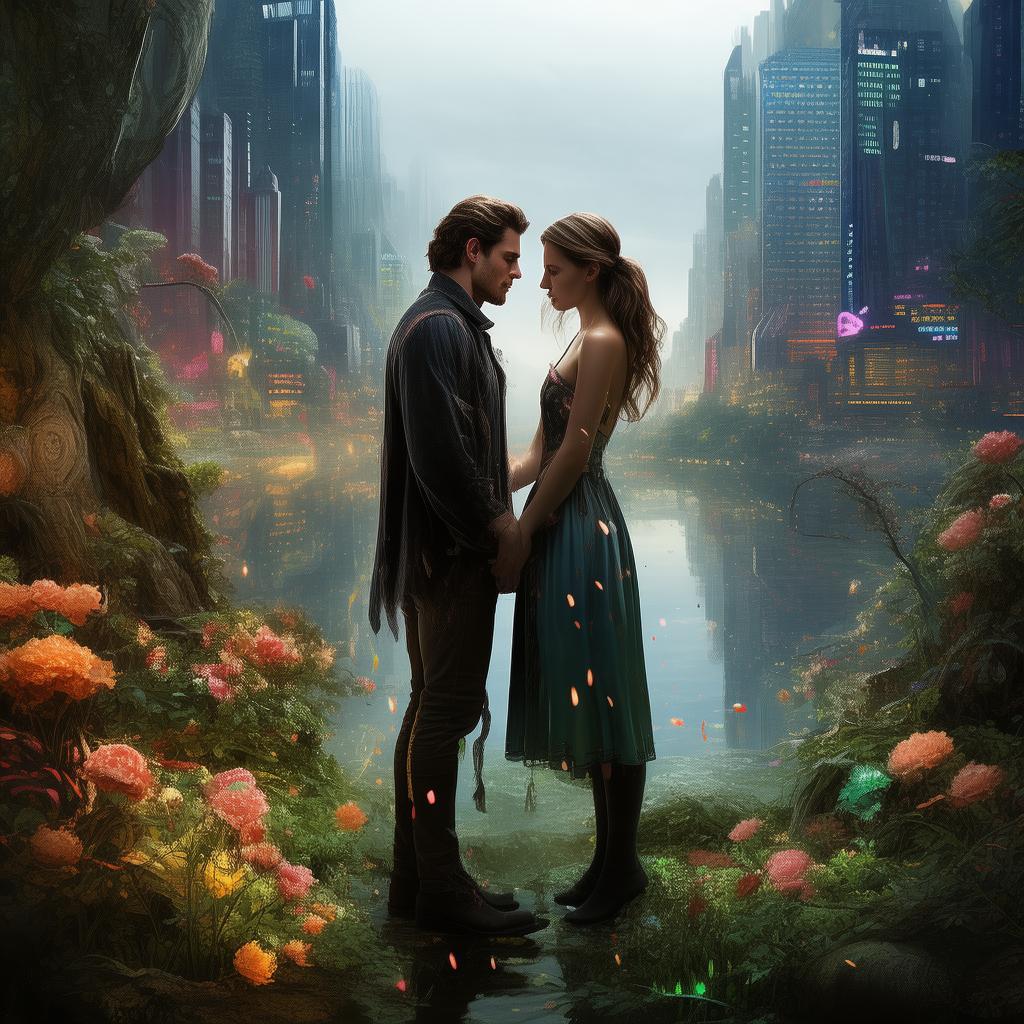The Labyrinthine Heart
In the heart of Renaissance Florence, where the scent of rosemary mingles with the aroma of freshly baked bread, a young curator named Isabella strolled through the grand halls of the Uffizi Gallery. The museum, a beacon of art and history, was the culmination of her dreams, but her latest task was unlike any she had ever encountered.
Isabella was to oversee the restoration of a long-forgotten painting, "The Labyrinthine Heart," a work that had been hidden away for decades. The painting, a masterful portrayal of love and loss, was rumored to hold the key to a forbidden romance that had once shocked the city. Intrigued, Isabella delved into the historical records, seeking to uncover the story behind the canvas.

One rainy afternoon, as she carefully cleaned the painting, a faint watermark caught her eye. It was a monogram, the same one she had seen in an old diary she had found in the museum's archives. The monogram belonged to a painter named Jacopo, a man whose life had been as enigmatic as his art.
As the days passed, Isabella became increasingly absorbed in Jacopo's story. She discovered that he had been a protégé of the great Leonardo da Vinci, and that his paintings were as much about the heart as they were about the soul. Jacopo's art was a reflection of his forbidden love, a love that had been as passionate as it was dangerous.
One evening, as the museum prepared to close, Isabella noticed a shadowy figure lurking in the corner. The figure moved with grace, as if in a dance, and it was then that she realized it was Jacopo. She approached him cautiously, and he revealed himself, his eyes alight with a mix of fear and longing.
"Isabella," he whispered, "I have been watching you. You have the same heart as mine. I need you to understand my story."
Isabella listened intently as Jacopo recounted the tale of his forbidden love. He spoke of a woman named Caterina, the daughter of a wealthy Florentine merchant. Their romance had been a secret, one that could have cost them their lives if discovered. Jacopo had painted Caterina in every piece of his art, a testament to the depth of his love.
But as the years passed, Caterina had been forced to marry another man, and Jacopo had become a recluse, his art the only outlet for his heartache. The painting "The Labyrinthine Heart" was a tribute to their love, a love that would never be consummated.
Touched by Jacopo's story, Isabella realized that the painting was more than just art. It was a testament to the power of love, even in the face of adversity. She knew that she had to help Jacopo find peace, and she began to piece together the puzzle of his life.
As the restoration project progressed, Isabella and Jacopo found themselves drawn closer, their conversations filled with the echoes of their pasts. The walls of the gallery seemed to listen, as if they too understood the depth of their connection.
But the more Isabella learned about Jacopo, the more she realized that her own heart was in danger. The power of Jacopo's forbidden love had not faded, and it threatened to consume her as well. She was torn between her duties as a curator and her growing affection for Jacopo.
The climax of their story came when Isabella discovered that Caterina, alive and in hiding, was still alive. Jacopo's heart leaped with hope, but Isabella knew that bringing Caterina into their lives would be dangerous for all involved.
In a final act of love and bravery, Isabella arranged for a meeting between Jacopo and Caterina. The trio gathered in the dimly lit room where "The Labyrinthine Heart" hung, the canvas a silent witness to their story.
Caterina and Jacopo were overwhelmed with emotion, their love rekindled in the presence of the painting that had brought them back together. Isabella, in the background, felt a profound sense of peace, knowing that she had played a part in a love that transcended time.
As the meeting ended and the trio said their farewells, Isabella watched Jacopo and Caterina walk away together. She knew that her own heart would always belong to the artist whose art had changed her life forever.
The restoration of "The Labyrinthine Heart" was complete, and the painting found its place in the gallery once more. Isabella returned to her life as a curator, but she carried the love and the lessons of Jacopo's story with her. She understood that love, like art, could be restored, even when it seemed lost forever.
✨ Original Statement ✨
All articles published on this website (including but not limited to text, images, videos, and other content) are original or authorized for reposting and are protected by relevant laws. Without the explicit written permission of this website, no individual or organization may copy, modify, repost, or use the content for commercial purposes.
If you need to quote or cooperate, please contact this site for authorization. We reserve the right to pursue legal responsibility for any unauthorized use.
Hereby declared.









